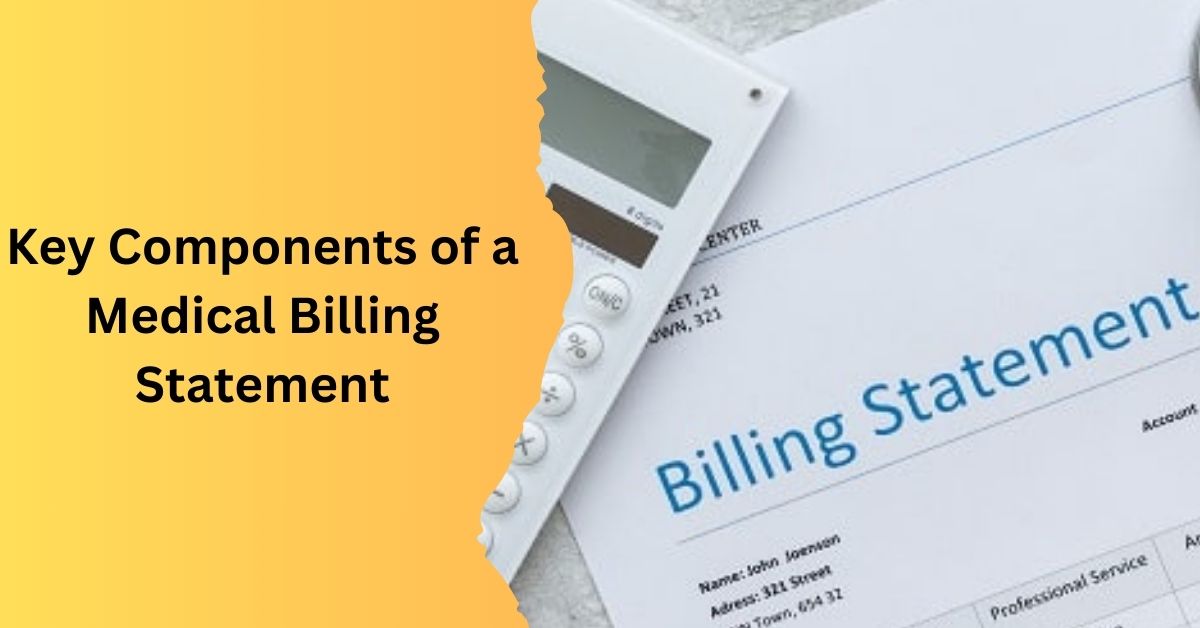Medical billing statements offer a detailed account of services rendered, costs, and patient payment obligations. They ensure transparency between healthcare providers and patients by itemizing procedures, medications, and treatments. These statements aid in accurate billing and insurer notification. Here is an overview of the main components of a medical billing statement:
Patient Information
The patient information section incorporates personal and insurance details while maintaining compliance with the Health Insurance Portability and Accountability Act (HIPAA). This section includes patient identifiers like name, date of birth, and contact details. It also contains insurance details like the policy number and insurer, facilitating swift and accurate billing.
Service Details
Medical billing statements describe services patients receive during a visit or stay. This section enumerates procedures performed, medications administered, and treatments provided. Each service is assigned a specific current procedural terminology (CPT) code corresponding to a universally recognized billing system.
This standardization allows clear communication between healthcare entities and insurance companies. The statement also records the date of service, which is crucial for tracking treatment timelines and coordinating with insurance claim periods.
Cost Breakdown
The cost breakdown outlines each charge associated with the services rendered. This section provides an itemized list, including each procedure, medication, or treatment cost.
It incorporates applicable fees, insurance coverage, the amount the insurer will pay, any adjustments or discounts, and the remaining balance the patient is responsible for.
This transparency enables patients to understand their financial obligations, facilitates the insurer’s payment process, and promotes fair practices in the healthcare industry.
Insurance Coverage and Adjustments
The insurance coverage and adjustments section provides an in-depth view of the insurer’s role in the payment process. It outlines the insurance coverage details, including the insured services and the amount the insurance is expected to pay.
This section also includes any adjustments or discounts the insurance company applies according to their policy terms and the final amount payable by the patient after insurance adjustments.
Details of the Healthcare Provider
This component of a healthcare billing statement involves the particulars of the healthcare provider. The segment comprises the provider’s name and contact details, serving as a reference and communication conduit for patients or insurance companies.
It also includes unique identifiers like provider and tax identification numbers. These identifiers can help in accurate tracking within the healthcare system.
Payment Information
The payment section states the total amount due and itemizes the final cost to the patient post-insurance adjustments. It indicates the due date for the payment. This section also highlights the accepted payment methods.
Contact Information for Billing Inquiries
This section provides various channels of communication. It allows patients or insurance companies to reach out with any concerns or questions regarding the billing statement. This includes phone numbers and email addresses. In some instances where physical documentation or payment is necessary, a mailing address is also provided.
Additional Information
A healthcare billing statement’s “Additional Information” section provides insights into financial aid options and stipulations. This includes details on financial assistance programs, eligibility criteria and application processes.
It guides patients through potential avenues for financial relief. It also elaborates on available payment plans by presenting different options to help patients manage their financial obligations in a manner that suits their circumstances.
This section also incorporates disclaimers, which inform patients about specific conditions or exceptions tied to payments, insurance claims, or service provisions.
Understanding of Medical Billing Statements
Patients and providers should know about medical billing statements and their components. These statements include components like descriptions of services, patient and provider information, cost breakdowns, and insurance coverage details.
This promotes transparency in healthcare billing, helping patients manage expenses and providers maintain fair practices. Communication channels allow quick resolution of issues, enhancing billing accuracy.










